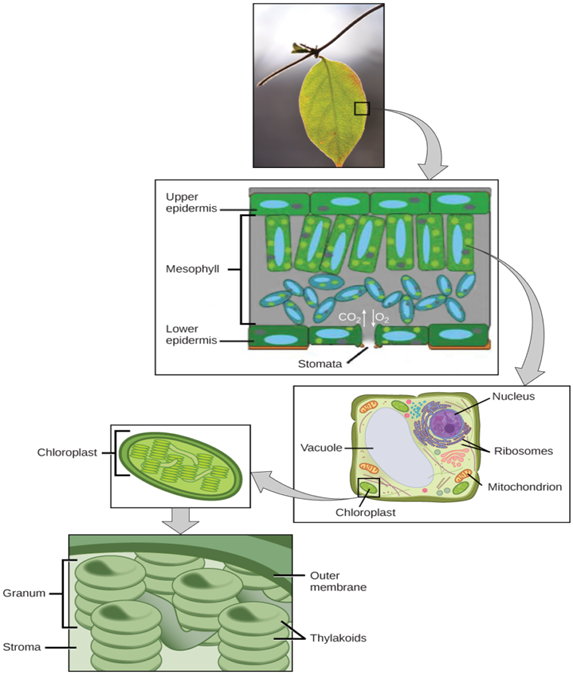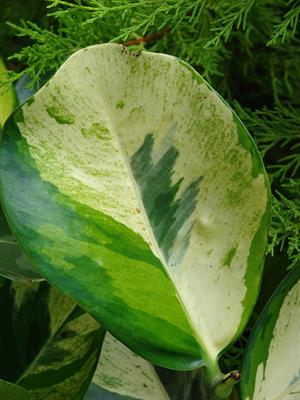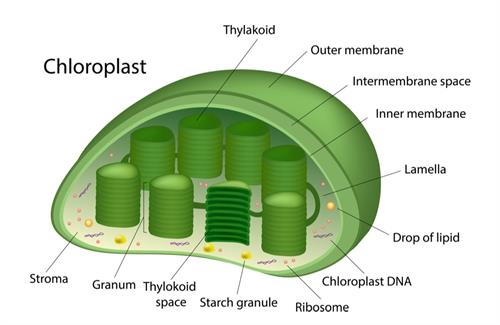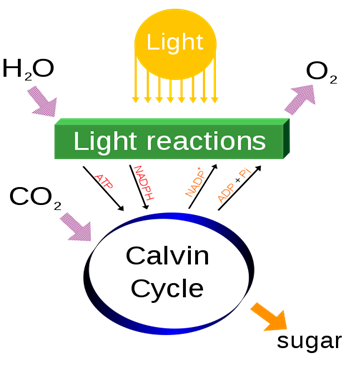
PUMPA - SMART LEARNING
எங்கள் ஆசிரியர்களுடன் 1-ஆன்-1 ஆலோசனை நேரத்தைப் பெறுங்கள். டாப்பர் ஆவதற்கு நாங்கள் பயிற்சி அளிப்போம்
Book Free DemoAs we know, chlorophyll is the pigment involved in photosynthesis, and it is found in the chloroplasts of the leaves.

Chloroplast and chlorophyll
Chlorophyll is a green colour water insoluble pigment that absorbs the light energy required to perform photosynthesis. There are 5 types of chlorophyll pigments found in plants. They are
- Chlorophyll a
- Chlorophyll b
- Chlorophyll c
- Chlorophyll d and
- Chlorophyll e
Out of these pigments only two pigments: chlorophyll a and chlorophyll b are found in higher plants.
Chlorophyll a is known as the universal photosynthetic pigment as it is found in all photosynthetic plants except bacteria. As it performs the reaction of photosynthesis it is also known as primary photosynthetic pigment.
The importance of chlorophyll in photosynthesis can be clearly understood with the below experiment:
-
Pluck a variegated leaf (the leaf with more than one colour) from the coleus plant and place it in sunlight.
-
Now de-starch the leaf by keeping it in the dark for \(24\)hours
-
Draw the picture of the leaf on paper and mark the patches of chlorophyll on the drawing.
-
Immerse the leaf in boiling water and then in alcohol (chlorophyll content gets removed) and test for starch using iodine solution.
-
Now compare the leaf with the drawing made.
Observation and conclusion:

Variegated leaf
Only the areas that were marked as green turn into blue, indicating that chlorophyll is necessary for photosynthesis.
A video explaining that chlorophyll is required for photosynthesis:
Photosystem:
As we know, chlorophyll is present inside the chloroplasts of the leaves.
Click here to recall about chloroplasts.

Structure of a chloroplast
Photosynthesis is a reaction that occurs both during the light and the dark stages and are known as the light and dark reactions respectively.

Light reactions and dark reactions
Important!
These reactions will be explained in brief here and in detail in your later classes.
What are photosystems?
- Photosynthesis is a reaction that takes place in the grana of the chloroplasts.
- To promote photosynthesis, chlorophyll absorbs light energy. Thus, photosystems are functional units of photosynthesis.
- It is defined by a certain pigment organisation and association patterns, whose job is to absorb and transfer light energy, which entails electron transfer.
- They are multiprotein complexes that are physically present in the thylakoid membranes.
- The photosystem is made up of chlorophyll molecules. The common types of chlorophyll are photosystem I and photosystem II.
Types of photosystems:
- Photosystem I : It refers to the accumulation of the green pigment on the thylakoid membrane's outer side. It is responsible for facilitating the final stage of light reaction.
- Photosystem II: It refers to the accumulation of chlorophyll pigment in the thylakoid membrane's inner grana. It is responsible for catalyzing the first stage of light reaction.
Reference:
https://cnx.org/contents/s8Hh0oOc@8.56:cInR-Trg@7/Overview-of-Photosynthesis
https://commons.wikimedia.org/wiki/File:Simple_photosynthesis_overview.svg